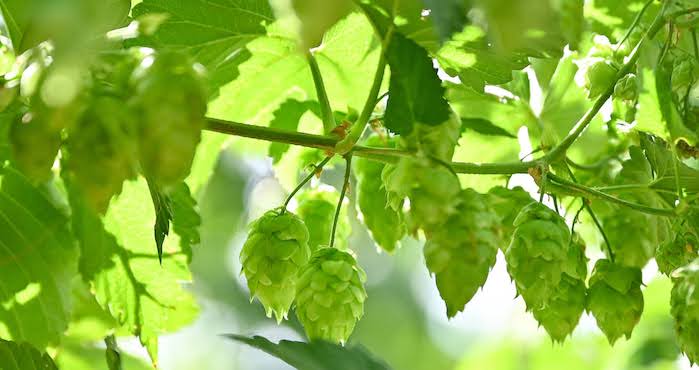Hop Science Newsletter (June 2016)
In this issue: purified Type-90 pellets, a hunt for spiciness in hoppy beers, and the influence on temperature and hop amount on extraction efficiency of hop oils.

WHAT IS THE PURIFIED TYPE 90 PELLET??
As presented at the CBC 2015 in collaboration with Boston Beer Company, we have established a specific pelletization process that produces a purified Type-90 pellet by removing the coarse material that has no brewing value, which offers several operational advantages including reduced beer losses. The process of making these pellets is described in this poster presentation. Further advantages of a purified pellet type is a decreased nitrate content and a more homogenous particle size. Also the flavor impact was investigated and will be presented in one of my upcoming Hop Science Newsletters.¹
NOW WE KNOW WHERE SPICINESS COMES FROM!
The hunt for the spiciness in hoppy beers was already reported a couple of times in previous Newsletters with the results that sesquiterpene oxidation products play
a key role for spiciness. In these pilot scale brewing trials this team was able to confirm that the responsible compounds for spiciness are: humulenol II, humulene
epoxide III, caryophylla-4(12),8(13)- diene-5-ol, 14-hydroxy-ß-caryophyllene, 3Z-caryophylla-3,8(13)-diene-5α-ol and 3Z-caryophylla- 3,8(13)-diene-5ß-ol. So we can most probably check spiciness off our list!²
INFLUENCE OF TEMPERATURE AND HOP AMOUNT ON EXTRACTION EFFIENCY OF HOP OILS
This is currently a very big question for brewers – what is the influence of the temperature during dry hopping? Typically, brewers will utilize temperatures between
0-25°C for dry hopping. This German research team did a comprehensive trial with Cascade hops and found that effects of temperature and hop dosage on concentration of hop aroma compounds were different for each compound that was investigated. Temperature had an influence on dissolution of geraniol in beer, while the transfer rate of myrcene exhibited a strong dose-response as hop dosage mass increased with no temperature influence.
NEED TO TOUCH BEER FOR DRY HOPPING PURPOSES…
A German research team that came up with the idea of extracting hop aroma into beer by applying a combined desorption/absorption process. The process-dependent mass transfer was predicted using two different approaches: a thermodynamic approach, and response surface modelling. The methods offer the following advantages: no beer losses, no clarification steps needed, potential reuse of hops for bittering. Using response surface methodology was clearly superior as compared to calculating the mass transfer using thermodynamic approximations.3
EVENTS
Upcoming Hops Academies:
• August 23rd, Happy Hoppy Day in Paddock Wood, UK, registration here.
• September 27th & 28th in Yakima, USA. (This session is fully booked but get on the waiting list by contacting Tim.Kostelecky@johnihaas.com)
NEWEST HOP MARKET REPORT
Please find our hop market report for June 2016 here.
REFERENCES:
1. Gahr, A. et al: Production and use of a purified typ 90 pellet Poster presentation at the Trends in Brewing Conference, April 2016, Ghent. http://www.trendsinbrewing.org/program.html
2. Praet T.: HOPPY AROMA CHARACTERISTICS OF CONVENTIONALLY AND ADVANCED HOPPED PILOT-SCALE LAGER BEERS, poster presentation at the Trends in Brewing
Conference, April 2016, Ghent. http://www.trendsinbrewing.org/program.html
3. Klie, R.: Feasibility and Optimization of a Novel Desorption/ Absorption Process for Transferring Hop Volatiles into Beer, poster presentation at the Trends in Brewing Conference, April 2016, Ghent. http://www.trendsinbrewing.org/program.html
